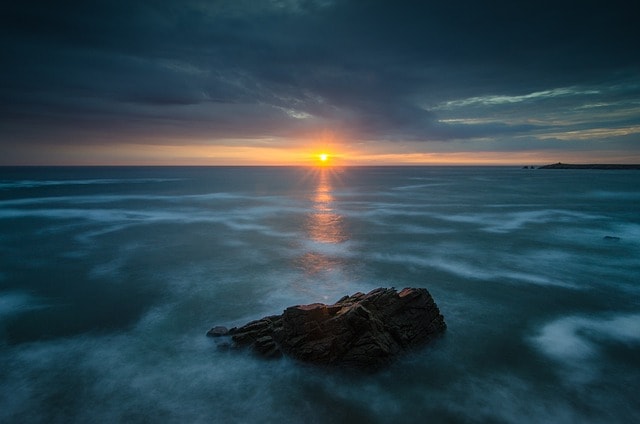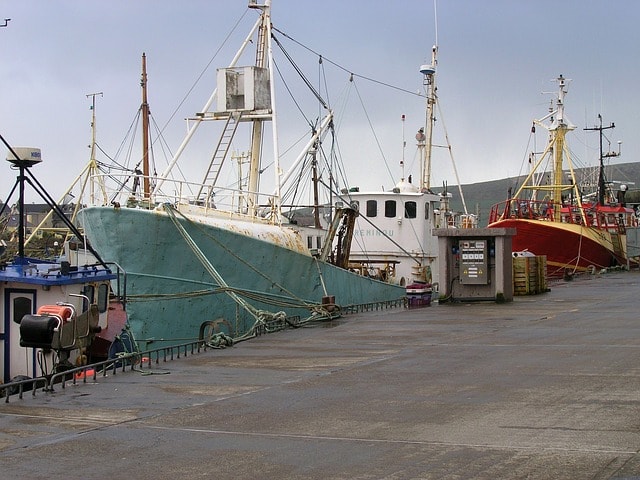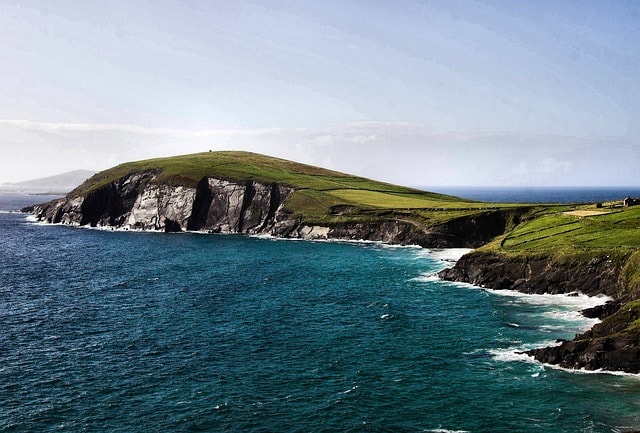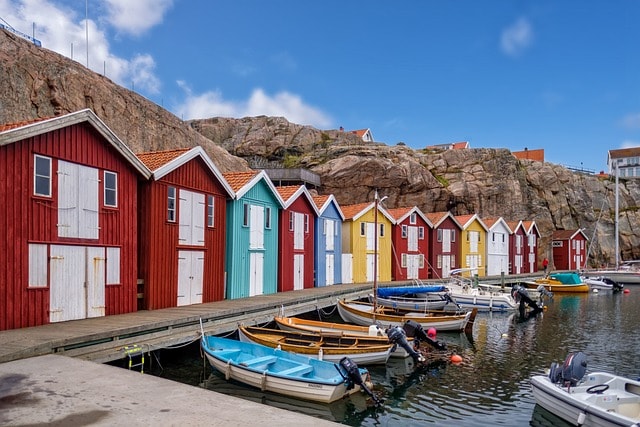Is Dingle Worth Visiting | Reasons To Visit Dingle in 2024
Yes, Dingle is absolutely worth visiting. This charming coastal town on the Dingle Peninsula offers a perfect blend of stunning natural landscapes, rich history, and vibrant culture. Known for its dramatic cliffs, sandy beaches, and the scenic Wild Atlantic Way, Dingle is a paradise for nature lovers and outdoor enthusiasts. The town itself is full of colorful buildings, cozy pubs, and artisanal shops, providing an authentic Irish experience.
Dingle is also steeped in history, with ancient sites like the Gallarus Oratory and Beehive Huts offering a glimpse into Ireland’s past. The local hospitality is second to none, with friendly locals eager to share their stories and traditions. Whether you’re exploring the scenic Slea Head Drive, meeting Fungie the Dolphin, or enjoying traditional music in a local pub, Dingle offers something for everyone. Its unique blend of natural beauty, cultural richness, and welcoming atmosphere makes Dingle a must-visit destination.

Is Dingle Worth Visiting for Tourists?
Yes, Dingle is absolutely worth visiting for tourists, offering a perfect blend of scenic beauty, cultural richness, and authentic Irish experiences. The town is set against the dramatic backdrop of the Dingle Peninsula, part of the Wild Atlantic Way, which is one of the most scenic drives in the world. The area is known for its rugged coastline, sandy beaches, and breathtaking cliffs, making it a paradise for nature lovers and outdoor enthusiasts.
But Dingle is more than just a pretty face; it’s a town steeped in history and culture. From ancient archaeological sites to traditional live music sessions in cozy pubs, Dingle offers a deep dive into Irish heritage. The town itself is small and walkable, with brightly colored shops, art galleries, and cafes lining its streets, giving it a quaint yet lively atmosphere.
Moreover, Dingle is renowned for its hospitality. The locals are friendly and welcoming, eager to share their stories and traditions with visitors. Whether you’re exploring the town’s historic sites, hiking the scenic trails, or enjoying a pint in a local pub, you’ll feel right at home in Dingle. For these reasons, Dingle is not just worth visiting—it’s a destination that will leave a lasting impression.

Best Things To Do In Dingle
Best Things To Do In Dingle are Exploring Dingle Town, Experiencing the Wild Atlantic Way, Discovering Historic Sites, Meeting Fungie the Dolphin. Dingle Town is known for its charming streets lined with colorful shops, traditional pubs, and vibrant local culture. Walking through the town, you can enjoy local crafts, music, and delicious seafood. Wild Atlantic Way is famous for its breathtaking coastal scenery, offering dramatic views, rugged cliffs, and beautiful beaches.
A drive tour bus or cycle along this route provides stunning landscapes and an unforgettable connection with nature. Historic sites in Dingle include ancient ring forts, beehive huts, and the iconic Gallarus Oratory, giving visitors a glimpse into Ireland's rich past. Meeting Fungie the Dolphin has become a beloved tradition, as this friendly bottlenose dolphin has been delighting visitors in Dingle Bay for decades, offering boat tours that bring you close to this playful marine resident.
Explore Dingle Town
One of the best ways to experience Dingle is by simply exploring the town itself. Start your day with a stroll through the town’s colorful streets, where you’ll find an array of unique shops, art galleries, and cafes. Dingle is known for its artisanal crafts, so be sure to browse the local boutiques for handmade pottery, jewelry, and other souvenirs.
As you wander, you’ll also come across several historical landmarks. Visit St. Mary’s Church, a beautiful Gothic-style church that dates back to the 19th century. Nearby, you’ll find the Dingle Workhouse, which provides insight into Ireland’s past, particularly during the Great Famine.
Don’t miss the chance to visit the Dingle Distillery, where you can learn about the craft of distilling and sample some of the town’s finest whiskey and gin. The distillery offers guided tours that take you through the production process, from grain to glass.
Experience the Wild Atlantic Way
The Wild Atlantic Way is one of the most scenic coastal routes in the world, and Dingle is one of its most stunning stretches. This short distance dramatic drive offers breathtaking views of the rugged coastline, with the Atlantic Ocean on one side and the rolling hills of the Dingle Peninsula on the other.
One of the highlights of the Wild Atlantic Way near Dingle is Slea Head Drive, a loop that takes you around the westernmost tip of the Dingle Peninsula. Along the way, you’ll pass by dramatic cliffs, sandy beaches, and picturesque villages. Be sure to stop at Coumeenoole Beach, a secluded spot known for its stunning views and strong waves, perfect for surfing enthusiasts.
As you drive, keep an eye out for the ancient beehive huts, stone structures that date back to early Christian times. The scenery along the Wild Atlantic Way is truly awe-inspiring, making it a must-do when visiting Dingle.
Discover Historic Sites
Dingle is rich in history, and there are several historic sites in and around the town that are well worth a visit. One of the most significant is the Gallarus Oratory, an ancient stone church that dates back to the 7th or 8th century. This remarkably well-preserved structure is one of the best examples of early Christian architecture in Ireland.
Another notable site is the Dingle Peninsula’s ancient ring forts, such as the Dunbeg Fort. Perched on a cliff overlooking the Atlantic Ocean, this Iron Age fort offers stunning views and a fascinating glimpse into Ireland’s ancient past.
For a more recent historical experience, visit the Blasket Islands, just off the coast of the Dingle Peninsula. These islands were inhabited until 1953, and the Blasket Centre tells the story of the islanders’ way of life, their rich literary heritage, and their eventual emigration.
Meet Fungie the Dolphin
Fungie the dolphin is perhaps Dingle’s most famous resident. This friendly bottlenose dolphin has been living in Dingle Bay for over 30 years, delighting visitors with his playful antics. Boat tours are available from Dingle Harbor, offering a chance to see Fungie up close in his natural habitat.
These tours are a great way to experience Dingle’s marine life, and many visitors consider it a highlight of their trip. Fungie is known for being very sociable, often swimming alongside the boats and jumping out of the water to the delight of passengers.
Even though Fungie has become somewhat of a local celebrity, the tours offer much more than just a dolphin sighting. You’ll also get to enjoy stunning views of the Dingle coastline, with its rugged cliffs and hidden coves.

Hidden Gems in Dingle
Hidden Gems in Dingle are Eask Tower, Conor Pass, Minard Castle, Dunquin Pier, Beehive Huts. Eask Tower is famous for its panoramic views of Dingle Bay and the surrounding countryside. Conor Pass is known for being one of Ireland's highest mountain passes, offering breathtaking views and dramatic landscapes.
Minard Castle is a historic ruin perched on a hill overlooking a rocky beach, providing a glimpse into Ireland's medieval past. Dunquin Pier is celebrated for its stunning coastal scenery and as a starting point for boat trips to the Blasket Islands. Beehive Huts are ancient stone structures that offer insight into early Irish settlement and architecture.
Eask Tower
Eask Tower is one of the most intriguing hidden gems near Dingle Town. Perched atop Carhoo Hill, this stone tower was constructed in 1847 as a guide for ships navigating their way into Dingle Harbor. The tower’s location was chosen for its strategic vantage and lookout point, offering panoramic views of the Dingle Peninsula, Dingle Bay, and the surrounding countryside. The tower itself, with its conical shape and robust stone construction, stands as a testament to Ireland’s maritime history.
Reaching Eask Tower requires a short but steep hike, which typically takes a few hours or about 30 minutes. The path to the tower is well-trodden, passing through lush green fields that are often dotted with grazing sheep. As you ascend, the views become increasingly breathtaking, with the Atlantic Ocean stretching out before you and the rolling hills of the peninsula behind you.
Upon reaching the summit, you’ll be rewarded with a 360-degree view that is truly awe-inspiring. On clear days, you can see the Blasket Islands to the south pole inn the west and the rugged coastline that defines this part of Ireland. The tower itself is an interesting historical site, offering a peaceful spot for reflection and photography. Unlike the more popular tourist destinations in the area, Eask Tower is often less crowded, allowing visitors to enjoy the serene environment and stunning views in relative solitude.
Conor Pass
Conor Pass is another hidden gem that should not be missed when visiting Dingle. As one of the highest mountain passes in Ireland, Conor Pass offers some of the most dramatic and scenic views in the country. The road leading to the pass is narrow and winding, with steep cliffs on one side and deep valleys on the other, making the drive an adventure in itself.
The journey to Conor Pass is filled with breathtaking landscapes, with each twist and turn revealing new vistas. The pass is situated at an elevation of 456 meters (1,496 feet) and connects Dingle Town to the northern part of the Dingle Peninsula. Driving the pass can be a bit nerve-wracking, especially in wet or foggy conditions, but the views are well worth the effort.
At the summit of Conor Pass, there is a parking area where you can stop to take in the beautiful scenery. The views from the top are nothing short of spectacular. On a clear day, you can see all the way to the Blasket Islands to the west and the Aran Islands to the north. The vast expanse of the Atlantic Ocean stretches out before you, while the rolling hills and deep valleys of the peninsula unfold in every direction.
For those who enjoy hiking, there are several trails near Conor Pass that offer even more spectacular viewpoints. These trails range from short, easy walks to more challenging hikes that take you deeper into the rugged landscape. Whether you choose to drive or hike, Conor Pass provides a unique opportunity to experience the raw beauty of the Dingle Peninsula.
Minard Castle
Minard Castle is one of the lesser-known historic sites on the Dingle Peninsula, offering a glimpse into Ireland’s turbulent past. Located on a hill overlooking the Atlantic Ocean, Minard Castle was built in the 16th century and played a significant role during the Cromwellian conquest of Ireland. The castle was destroyed by Oliver Cromwell’s forces in the 1650s, but its ruins still stand today, offering a hauntingly beautiful reminder of Ireland’s history.
The castle is surrounded by large boulders, which are believed to have been deposited by the sea during a storm. This unique setting, with the ruins of the castle set against the backdrop of the ocean and rolling green hills, creates a striking contrast that is both dramatic and serene.
Visiting Minard Castle offers a peaceful escape from the more crowded tourist spots in Dingle. The area around the castle is perfect for a quiet walk or a picnic, allowing you to take in the stunning views of the coastline and the surrounding countryside. The nearby beach is also worth exploring, with its unique geology and tidal pools that are home to a variety of marine life.
Minard Castle is a place where history and nature come together in a way that is both evocative and tranquil. It’s a hidden gem that provides a deeper understanding of the Dingle Peninsula’s past while offering a beautiful and serene setting to enjoy the present.
Dunquin Pier
Dunquin Pier is one of the most photographed spots on the Dingle Peninsula, and for good reason. Located in the village of Dunquin, which is the westernmost settlement in Ireland, the pier is known for its dramatic, winding path that leads down to the sea. The path, carved into the steep cliffs, is as scenic as it is functional, offering breathtaking views of the rugged coastline and the vast Atlantic Ocean.
Dunquin Pier is the departure point for boat trips to the Blasket Islands, a group of islands off the coast of the Dingle Peninsula that are rich in history and natural beauty. Even if you don’t plan to visit the islands, the pier itself is worth a visit for its stunning views and unique setting.
The area around Dunquin Pier is steeped in history and culture. The Blasket Centre, located nearby, provides insights into the lives of the people who once lived on the Blasket Islands. These islands were inhabited until 1953, and the center tells the story of the islanders’ way of life, their rich literary heritage, and their eventual emigration.
The landscape around Dunquin Pier is truly breathtaking, with towering cliffs, crashing waves, and endless ocean views. The pier and its surroundings offer a sense of isolation and tranquility that is hard to find in more popular tourist spots. It’s a place where you can connect with the natural beauty of the Dingle Peninsula and experience the wild, untamed spirit of Ireland’s western coast.

Beehive Huts
The Beehive Huts, also known as clocháns, are ancient stone structures that date back to the early Christian period. These circular huts, made entirely of stone, were used as dwellings by monks and hermits who sought solitude in the remote landscapes of the Dingle Peninsula. The huts are located along the Slea Head Drive, one of the most scenic routes in Ireland, and visiting them offers a unique glimpse into Ireland’s early Christian history.
The Beehive Huts are remarkably well-preserved, with their dry-stone construction still intact after centuries of exposure to the elements. The huts were built without mortar, using a corbelled technique that allowed the stones to be stacked in a way that created a domed roof. This construction method, along with the huts’ remote locations, has helped them withstand the test of time.
Exploring the Beehive Huts is a fascinating experience, as it allows you to step back in time and imagine what life was like for the early inhabitants of this rugged and isolated region. The huts are often located in remote and scenic spots, offering stunning views of the surrounding countryside and the Atlantic Ocean.
Visiting the Beehive Huts also provides an opportunity to learn more about the early Christian period in Ireland. The huts are a testament to the resourcefulness and resilience of the monks and hermits who built them, and they offer a unique insight into the spiritual and ascetic traditions of early Irish Christianity.
The Beehive Huts are a hidden gem that offers a rare opportunity to connect with Ireland’s ancient past while enjoying the natural beauty of the Dingle Peninsula. Whether you’re a history enthusiast or simply someone who appreciates unique and off-the-beaten-path experiences, the Beehive Huts are a must-visit when exploring Dingle.
How To Spend a Day in Dingle?
If you only have one day to spend in Dingle, you can still experience many of the highlights that make fantastic trip to this town and its surroundings so special. Here’s a suggested itinerary for making the most of your time in Dingle.
Morning: Explore Dingle Town
Start your day with a leisurely breakfast at one of Dingle’s cozy cafes, then spend the morning exploring the town. Visit the local shops, where you can find unique souvenirs and crafts, and take a walk along the harbor to watch the fishing boats come and go.
Afterward, head to one of Dingle’s historical landmarks, such as St. Mary’s Church or the Dingle Distillery. If you’re interested in art, stop by one of the local galleries to see works by Irish artists inspired by the stunning landscapes of the Dingle Peninsula.
Midday: Lunch and Slea Head Drive
For lunch, enjoy a meal at one of Dingle’s many restaurants, where you can sample fresh seafood and other local specialties. After lunch, set off on the Slea Head Drive, one of the most scenic routes in Ireland. The drive takes about 2-3 hours, depending on how often you stop to take in the views.
Along the way, you’ll pass by Coumeenoole Beach, the Beehive Huts, and the village of Dunquin. Take your time to explore these sites and enjoy the breathtaking scenery.
Afternoon: Visit Fungie the Dolphin
In the afternoon, return to Dingle Town and join a boat tour down dingle way to see Fungie the dolphin. These tours typically last about an hour, giving you plenty of time to see Fungie up close and take in the views of Dingle Bay.
Evening: Dinner and Traditional Music
End your day with dinner at a local dingle pub, where you can enjoy hearty Irish cuisine and perhaps catch a live traditional music session. Dingle is known for its lively music scene, and many pubs feature talented musicians playing everything from traditional Irish folk tunes to contemporary songs.
Where To Stay in Dingle?
Dingle offers a wide range of accommodation options, from cozy bed and breakfasts to luxury hotels. Here are a few recommendations for places to stay in Dingle:
-
Dingle Benners Hotel: This charming hotel, located in the heart of Dingle Town, offers comfortable rooms and a warm, welcoming atmosphere. The hotel’s traditional Irish decor and friendly staff make it a popular choice for visitors.
-
Greenmount House: A family-run guesthouse with stunning views of Dingle Bay, Greenmount House is known for its comfortable rooms and excellent breakfast. The guesthouse is located just a short walk from the town center, making it a convenient base for exploring Dingle.
-
Milltown House: This boutique hotel, located on the outskirts of Dingle Town, offers luxurious rooms and beautiful views of the harbor. Milltown House also has a charming garden and a cozy bar, perfect for relaxing after a day of exploring.
-
Hideout Hostel: For budget travelers, Hideout Hostel offers clean, comfortable dorms and private rooms at an affordable price. The hostel is located in the center of town, making it easy to explore the Dingle attractions on foot.
FAQs On Is Dingle Worth Visiting
1. Is Dingle suitable for a family vacation?
Yes, Dingle is an excellent destination for families. There are plenty of family-friendly activities, including boat tours, beach visits, and exploring historical sites. The town’s compact size and friendly atmosphere make it easy to navigate with children.
2. Can I visit Dingle as a day trip from other parts of Ireland?
While Dingle can be visited as a day trip from nearby areas such as Killarney, it’s recommended to spend at least a couple of days in Dingle to fully experience everything the town and peninsula have to offer.
3. What is the best time of year to visit Dingle?
The best time to visit Dingle is from late spring to the summer months early autumn (May to September), when the weather is mild and the days are longer. This is also when many of the local festivals and events take place.
4. Is Dingle a good destination for outdoor activities?
Yes, Dingle is a paradise for outdoor enthusiasts. The area offers a wide range of activities, including: hiking trails, walking distance cycling, surfing, and kayaking. The Dingle Peninsula is also home to some of the most scenic walking trails in Ireland.
5. How do I get to Dingle?
Dingle is accessible by car, bus, and train. The nearest airport is Kerry Airport, about an hour’s drive from Dingle. From there, you can rent a car or take a bus to reach the town. There are also direct bus services from major cities like Dublin and Cork.
